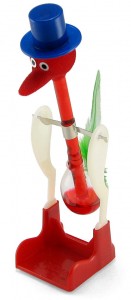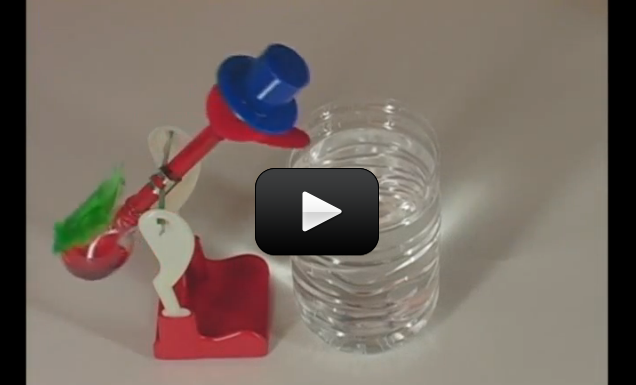
The Drinking Bird is a classic science toy that dips its head up and down into a glass of water. It’s filled with a liquid called methylene chloride, and the head is covered with red felt that gets wet when it drinks. But how does it work? Is it perpetual motion?
Let’s take a look at what’s going on with the bird, why it works, and how we’re going to modify it so it can run on its own without using any water at all!
Please login or register to read the rest of this content.


You can draw on him, no problem! He’d probably like it!
For an actual question, Will it affect the bird if I draw eyes or something on it? I couldn’t glue the hat back on though, right? It would block the sun wouldn’t it? Thanks, and sorry!
M
I found one at Hobby Lobby
-Matilda
the video was more about the tweet tweet bird. Did I spell it right.
Any science store will have one, especially Edmund Scientific. Or maybe Amazon.com?
Hi,
I have one quick question…Where do I get a drinking bird from?
Thanks
That’s an interesting idea… but I can see how it’d be very difficult. The liquid inside the bird isn’t something you can touch with your hands, and it’s under pressure (read about this in the main part of the experiment).
Is there an experimant for making a drinking bird?
Your light/heat source may not be warm enough. What happens if you try to or three lights? Or in the sunshine? Note – this experiment does not work in fluorescent bulbs.
We went through the modification, but our drinking bird is not bobbing.
Any suggestions?